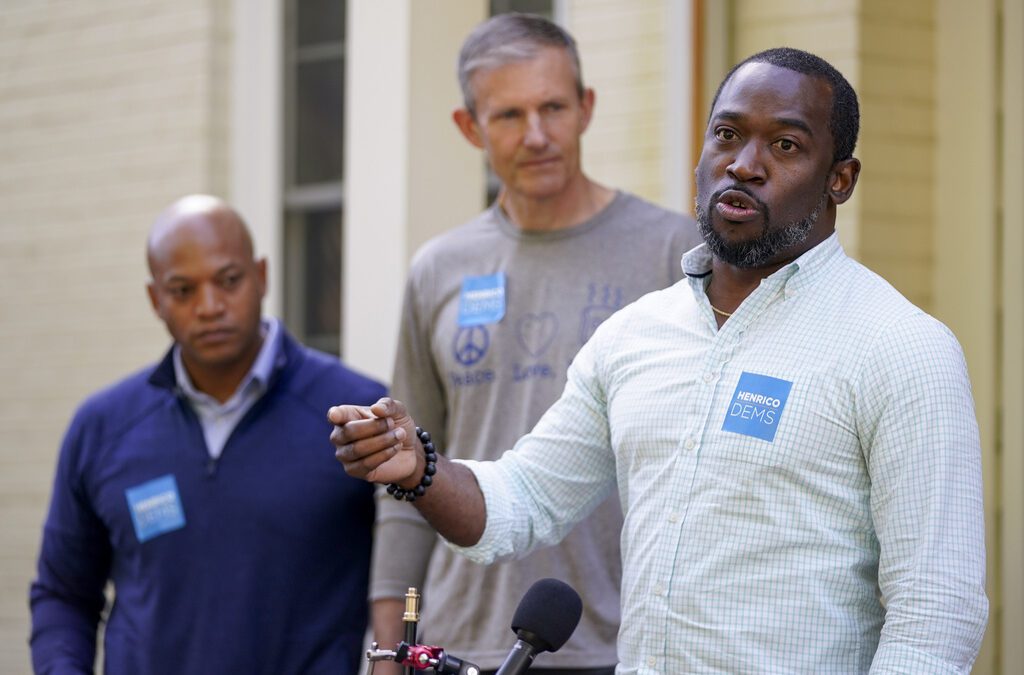As the price of insulin has skyrocketed in the past decade, diabetics have been forced to ration their insulin, turn to cheaper alternatives, or forego the medication altogether, all of which have had fatal consequences.
In Virginia, Democrats are increasingly focused on solving that problem. Del. Lee Carter (D-Manassas) announced he plans to introduce a bill capping insurance co-payments on insulin to $30 per month for Virginia residents.
No such cap exists currently and Americans with type 1 diabetes each spent an average of $5,705 on insulin in 2016, roughly double the amount they spent in 2012, according to a 2019 study from the Health Care Cost Institute, an independent, non-profit research institute.
Carter intends to introduce his legislation after this November’s election, so that it can be considered in the 2020 General Assembly session. If passed, it would make Virginia only the second state to introduce a co-payment cap on insulin after Colorado passed a $100-per-month limit on insulin co-payments for insured patients earlier this year.
“Insulin is one of those drugs where you can’t just grit your teeth and bear it,” Carter told the Virginian-Pilot. “When you need it, you need it.”
Carter is not alone in his push to lower insulin costs with a co-payment cap.
Ann Ridgeway, the Democratic nominee for the House of Delegates’ 30th district, said one of her first priorities if elected would be to lower insulin costs by introducing a bill similar to the one in Colorado.
“Diabetics need insulin to live…People are using half their insulin and that’s just a death sentence for people,” Ridgeway said in an interview.
Shelly Simonds, the Democratic candidate for the House of Delegates in the Newport News-area 94th District, also has a plan to combat the rising cost of insulin and other drugs.
Simonds wants to set up a state review board that could put the state on a path to setting caps on prescription drug price increases. Simonds also revealed that the issue is personal for her; her father is a diabetic and she’s watched her mother struggle to find affordable insulin for him in recent years.
“It just breaks my heart that she has to spend her retirement years managing medication purchases and shopping around for the best price,” Simonds said in a recent Facebook livestream.
Among the key contributors to the rising cost of insulin is that only three companies in the U.S. manufacture the medication, and there’s no true generic form of it.
While those companies – Eli Lilly, Sanofi, and NovoNordisk – do offer patient assistance and cost sharing programs, the price of insulin still increased by 15-17% per year from 2012 to 2016, according to a recent report from Virginia’s Joint Commission on Health Care.
Meanwhile, Novo Nordisk reported $2.02 billion in profit in its 2019 second-quarter earnings report, up from $1.83 billion in the same quarter of 2018, with sales rising 9.6% to $4.5 billion. The company attributed the increase to sales in its diabetes and obesity business.
It’s not just insulin, either; the broader pharmaceutical market has also seen costs skyrocket over the last decade. Between 2008 and 2016, the price of brand-name oral prescription drugs rose 9% each year, while injectable drugs increased by 15% per year, according to a 2019 study published in Health Affairs.
Those price increases don’t appear to be stopping, either. Drugmakers kicked off 2019 by raising the prices on more than 1,000 medications by an average of 6.3%. The opioid OxyContin, one of the most prescribed drugs in America, saw a 9.5% increase while blood-thinner Pradaxa shot up by 8%.
These costs have been passed onto patients; Americans spent $535 billion on prescription drug costs in 2018, a 50% increase since 2010, according to an estimate from Pew Charitable Trusts.
Costs have gotten so out of hand that in 2016, 28% of Americans aged 16 – 64 stopped taking their prescription medication because they could no longer afford to buy them, according to the Virginia Joint Commission on Health Care.
The issue is an important one to Virginians, too; a majority of Virginians (55%) want the government to address healthcare costs, including the rising cost of prescription drugs, according to the Virginia Consumer Healthcare Experience State Survey (CHESS).
Democrats have tried in recent years, but have had little success in the face of Republican opposition.
Sen. John Edwards (D-Roanoke) introduced legislation in both 2018 and 2019 that would have prevented prescription drug price gouging, but both of his bills died in Republican-controlled committees.
A 2018 bill from Del. Chris Hurst (D-Blacksburg) met a similar fate. Hurst’s bill would have increased transparency in the healthcare system by requiring prescription drug companies to disclose information about how much it actually costs them to develop and produce drugs that cost more that $10,000. The bill was defeated on a party-line vote by Republicans in the House’s Commerce and Labor committee.
Whether Democrats like Carter, Ridgeway, and Simonds are able to address these issues in 2020 depends on what happens this November.
If Democrats win control of the General Assembly, Carter’s proposal and others like it could be given real consideration. If they lose, Republicans will continue to control the legislative agenda, making reforms like Carter’s less likely.
Politics

Biden administration bans noncompete clauses for workers
The Federal Trade Commission (FTC) voted on Tuesday to ban noncompete agreements—those pesky clauses that employers often force their workers to...

Democratic shakeup in Virginia primaries for governor, lieutenant governor
Richmond Mayor Levar Stoney quit his bid for governor and jumped into the race to be the Democratic nominee for lieutenant governor. The race for...
Local News

The zodiac signs of 12 iconic women offer insight into their historic accomplishments
Zodiac signs can tell you a lot about someone’s personality. Whether they’re an earth, water, air, or fire sign, these 12 categories (which are...

Virginia verses: Celebrating 5 poetic icons for National Poetry Month
There’s no shortage of great writers when it comes to our commonwealth. From the haunting verses of Edgar Allan Poe, who found solace in Richmond's...





